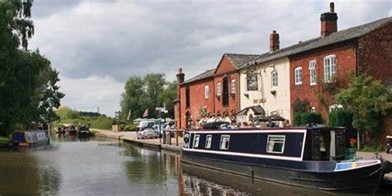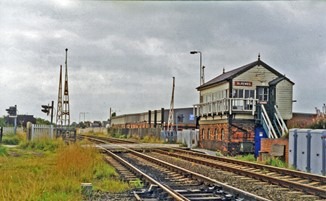Everyone has travelled along the A38, but did you know that it was originally built by the Romans?
Ryknield Street (A38) was built about 50-80 AD, almost 2000 years ago. The Romans liked to build very long, straight roads, connecting important places across England. At a small village called Wall, Ryknield Street meets another important Roman road – Watling Street (A5). There are ruins of Roman buildings at Wall which you can visit.
Originally, these roads would have been used by horses and people and was probably quite a rough surface, but in the 1900’s the car was invented and roads needed to be a lot smoother.
The A38 was designated in 1922 and was just a single tarmac road. It was made into a dual carriageway in 1958. You can see this at the canal bridge that goes under the A38. Half of it is the original curved canal bridge, like the other ones in the village and would have carried the original road. The other half of the bridge is a rectangular design made from concrete and was built in 1958 when the road was widened.
Other smaller roads have been in the village since at least 1800, which is when the first detailed maps where produced, but could have been there much longer. The canal bridge on Bridge Farm Road (90) was one of the main ways to get into Fradley from the 1790’s when the canal was built, but this was closed to cars in the 1990’s when the new bridge (90A) was built.
The canal that runs through Fradley is called the Coventry Canal. It was authorised in 1768, but not completed until 1787 and connected Coventry to the Trent & Mersey Canal at Fradley Junction.
The Trent & Mersey Canal actually opened in 1770, so came before the Coventry Canal. Fradley Junction was opened around 1790 when the 2 canals were joined and became an important stop off point for boaters, that needed food, drink, somewhere to sleep and stables for their horses. The Swan Inn could provide these things and could stable 22 horses. There were also workshops where blacksmiths and carpenters made and repaired lock gates, made horse shoes, repaired boats, etc. and warehouses, boat hoists and canal workers cottages.
Fradley Junction has a number of locks, that are very clever ways of taking boats up and down different levels on the canal.
When the canals first opened, horses would pull the narrow boats along. The path along the side of the canal is called a ‘tow path’ because this is the path that the horses towed the boats along.
The narrow boats themselves were very different back then because they mainly carried cargo – raw materials and finished goods. This could include carrying coal, rocks, bricks, wood and other materials. Stoke on Trent was famous for producing pottery and Burton on Trent was famous for brewing beer and these were connected by the Trent & Mersey Canal. But through the network of canals that were built at this time, you could travel all around the country.
In the early part of the 20th century (1900’s), the canals went into decline due to the increased use of railways and roads. However, the development of steam and diesel engines, did help them continue on. Horses were no longer needed, so it became a lot easier and quicker to move goods around.
In 1948, British Waterways took over ownership of the canals and although some cargo was still transported up to the 1980’s, it has mainly been used for leisure boating. The narrow boats you see today have kitchens, toilets, living rooms and bedrooms and people enjoy travelling around the country, living on their boats.
You may not have realised but there is a railway line in Fradley. It runs on the other side of the A38 and was opened in 1849.
The line began at Wychnor, a small village just north of Alrewas and ran past Fradley, through Lichfield and onto Walsall and Dudley.
There was a train station at Alrewas, that this closed in 1965.
The railways, like the canals were mainly used to carry cargo around the country and connected mines and quarries to towns and cities. This was much quicker than horses pulling narrow boats along the canals, so became the main way of transporting goods around the country.
However, in the early 20th century, the diesel engine was developed and new road networks started to extend. By the early-mid-20th century, roads and lorries had developed sufficiently that they largely took over from the railways. Trains are very limited because they have to travel on a track and can only go between one place and another. Lorries and roads can go anywhere, so are much more convenient for transporting goods and people around.
Railways are still a very important part of the transport network in our country and still carry a lot of cargo and people around the country.




